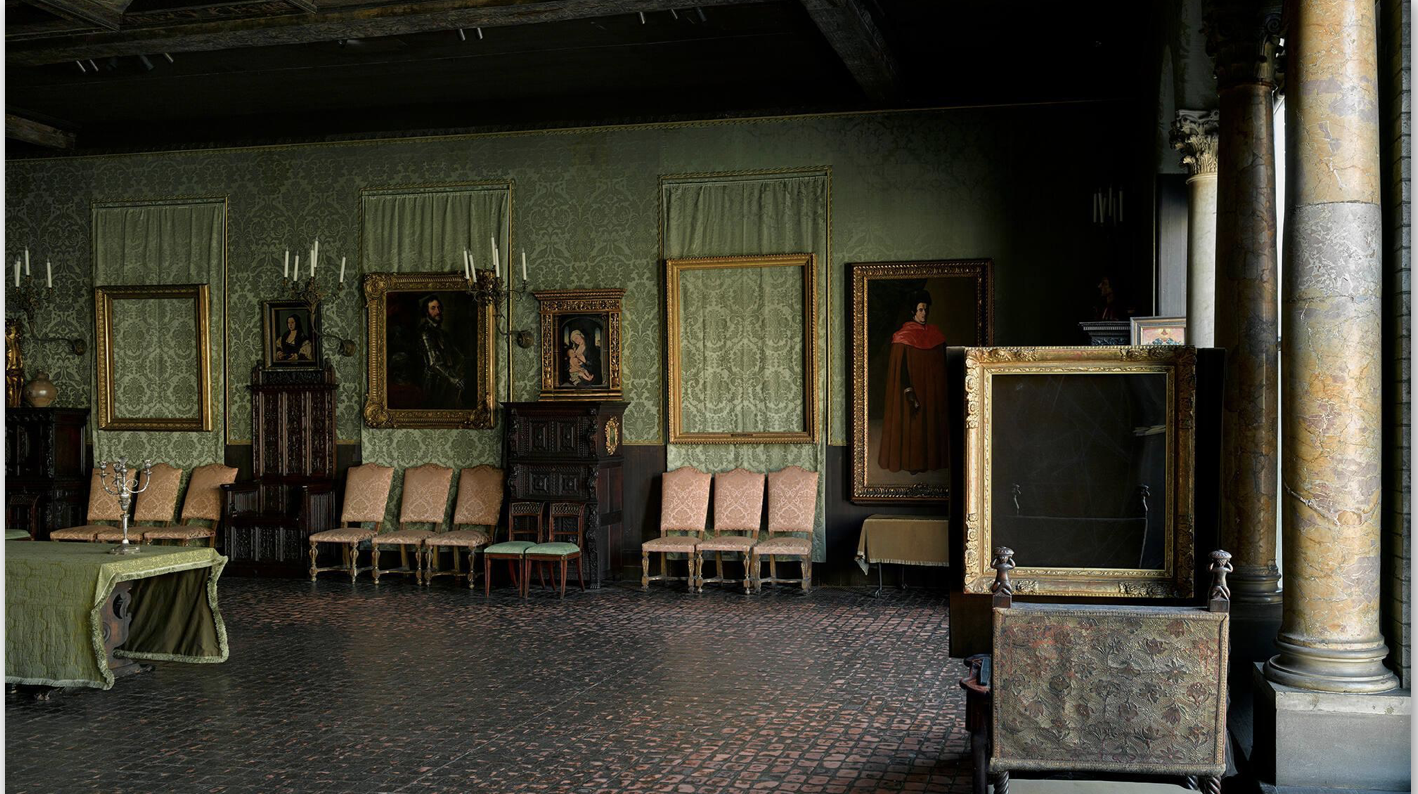by Amineddoleh & Associates LLC | Mar 23, 2024 |
In a highly-public withdrawal, Christie’s pulled four ancient Greek vases from auction. The four antiquities ranged in value from $7,000 to $30,000. It appears that the vases are the product of illicit dealings. They have been traced to the notorious antiquities trafficker Gianfranco Becchina.

One of the four disputed vases pulled from auction. Image via Christie’s.
Vases Traced to Notorious Dealer
Becchina, a well-known middleman in a looting network who was convicted for his actions in 2011, cosigned three of the four vases for a Geneva Christie’s auction in 1979. For the upcoming April 2024 auction, Christie’s listed the vases’ sale in 1979, but failed to disclose the fact that Becchina cosigned the objects. Dr. Christos Tsirogiannis, a lecturer at the Unviersity of Cambridge, called Christie’s nondisclosure “a trick used by the highest level. . . [t]hey deliberately exclude the connection of a trafficker in these three examples, although they’ve known about that connection for 45 years.”
Christie’s has released a statement counter to this effect, stating that the auction house “takes the subject of provenance research very seriously, especially when it related to cultural property.” However, taking the subject of provenance research seriously, and proactively allocating the resources and dedicated staff to carry out the work, are two different things.

A disputed vase pulled from auction. Image via Christie’s.
New Head of Provenance at the Met
In other antiquities news, the Metropolitan Museum of Art is taking a proactive stance. Last month, the museum hired Lucian Simmons (previously of Sotheby’s) as its first-ever Head of Provenance Research. This new position points to the museum’s recent efforts to increase the museum’s number of provenance-specific employees, in an era of greater scrutiny against both private and public collections. An increase in the number of restitutions has occurred during the past few decades, and this new hire makes the Met better situated to research provenance issues and handle requests for restitution. Mr. Simmons’ hiring brings the number of specialized province employees to eleven – an astonishing number for the institution.

Mr. Lucian Simmons. Image via Wilson Santiago/Metropolitan Museum of Art.
Mr. Simmons has extensive experience with provenance research and related issues, due to his long tenure at Sotheby’s. Since 1997, Simmons has developed and deployed transparent provenance policies for the auction house. In fact, transparency is at the heart of all of Simmons’ provenance work. He told to The New York Times that from the beginning of his time at Sotheby’s, he has “always tried to make sure [Sotheby’s was] very open” in the provenance research processes. Simmons intends to continue innovative model of transparency when he transitions to the Met this coming May.
New Awareness for Repatriation of Looted Antiquities
Repatriation actions for looted antiquities are increasingly being brought by countries around the world. Our firm has proudly represented and won legal claims related to looted antiquities on behalf of several nations, including the Republic of Italy and the Hellenic Republic of Greece. The cultural shift towards an increased awareness and respect for repatriation and restitution claims is something our firm both applauds and works to uphold.
by Amineddoleh & Associates LLC | Dec 10, 2023 |
In our annual holiday newsletter, Amineddoleh & Associates is pleased to share some of the major developments that took place at our firm and in the art market during 2023. We had a banner year, as we were grateful to work with many returning clients, as well as new ones, including museums, collectors, galleries, artists, and entrepreneurs. We are pleased to share some holiday JOY from us to you.

Grand Central Station. Image courtesy of NannFilms, used with permission.
CLIENTS AND REPRESENTATIVE MATTERS
Hiroshi Sugimoto’s Point of Infinity
Our firm proudly announced the public art unveiling of our esteemed client Hiroshi Sugimoto’s Point of Infinity. The gravity-defying sculpture maintains an optical illusion that the two points of the work will (eventually, even if only in the viewer’s minds’ eye) meet. It is a testament to the genius of Sugimoto as an artistic force. Read more here.
Client Acquires Master Drawings in New York
We proudly represented our client Christopher Bishop and his eponymous Christopher Bishop Fine Art in the acquisition of the art fair Master Drawings in New York. The fair, held annually in January in New York City, focuses on works on paper and features several important galleries, as well as programs with leading institutions. Interested in attending the 2024 event? Mark your calendars for opening day on January 27th. Read more here.
Client Opens New Gallery Space
Our firm was pleased to work with Atamian-Hovsepian Curatorial Practice as it transitioned from freelance curating to unveiling its own inaugural gallery and exhibition space in New York City, focusing on underrepresented artists.
Antiquities Restitutions
Amineddoleh & Associates was involved in a number of cultural heritage restitutions this year, including the return of a valuable marble statue to its country of origin and the return of a collection of historic artifacts to their home overseas.

Snow-covered cabin. Artwork courtesy of Justin Leitner, used with permission.
ART & IP NEWS
One thing we love about the art market is that there is always something unexpected and exciting happening in the art world. Read on for a glimpse at some of our most popular blog posts this past year.
Commercialism v. Transformativeness
In this blog post, our firm examined shifts in copyright law following the decision in Andy Warhol Foundation for the Visual Arts, Inc. v. Goldsmith, et al. This highly-anticipated Supreme Court decision involved application of the fair use test (a test used to determine whether the use of a copyrighted work may be used without permission) to a case with peculiar facts: a photographer (Goldsmith) provided a limited license through Vanity Fair that allowed another artist (Warhol) to use her photograph to create a silkscreen work. Warhol violated the terms of the license, and trouble ensued. Legal scholars hoped that the decision would provide clarification on the test. Unfortunately, the high court’s opinion did not provide much guidance. Curious as to why? Read more here.
Wise Women in Art & Entrepreneurship
Ever wonder where all the great women artists were in your art history lectures? At Amineddoleh & Assoc., we did, too. In honor of International Women’s Day, our firm took a closer look at some of the most talented and undercelebrated women artists in history. We also highlighted our friends at Building 180 – a standout, full-service global art production and consulting agency filling the gap between artists and businesses to create public and private art installations. Read more on our website.
Armenian Cultural Heritage at Risk
Our firm took an exclusive look at the Armenian cultural heritage at risk due to aggression from the Azerbaijani regime. The exodus of Armenians and Azerbaijan’s occupation of Artsakh left Armenian art and architecture unprotected. Artsakh is known as the “Crown Jewel” of Armenian cultural heritage, as it contains some of the most exemplary representations of medieval Armenian architecture, as well as important sites such as the first school to teach the Armenian alphabet in the early fifth century. Also in this post, our firm highlighted the new legal pathway the Republic of Armenia paved when seeking assistance from international courts to help protect their treasures. Read more here.

Christmas ornaments on 6th Ave. Image courtesy of NannFilms, used with permission.
LAW FIRM UPDATES AND EVENTS
Firm Founder Listed Again by Chambers
For the second consecutive year, firm founder Leila A. Amineddoleh was recognized by Chambers and Partners High Net Worth Guide for her work in Art and Cultural Property Law. The publication named Leila as an attorney who has “a lot of expertise in the cultural property space,” with “a great courtroom manner.” The publication also remarked on her active presence in the art law space and her work in the litigation area. Read more here. Leila was also named one of the “Top 10 Most Influential Art and Cultural Property Law Lawyers in 2023” by Business Today. For that award, Leila was selected for her “unique touch of fervor to her work, combined with a comprehensive understanding of art law.” Read more about that award here.
Art Law Conferences
Congratulations to our firm’s founder Leila A. Amineddoleh, who successfully chaired the 15th Annual NYCLA Art Law Institute, one of the most anticipated events of the year. Leila also moderated a fascinating panel during the event entitled “Broken Promises: Promised Gifts and Legal Enforceability.” A major theme in the panel was for lawyers to be extremely aware of the time between the time the gift was made, and the time the gift is executed (word to the wise: things can change!).
Yelena Ambartsumian gave a presentation at the conference with Claudia Quinones, one of our former associates (and current friend). The two gave thoughtful insight and wisdom on issues surrounding title and authenticity.

Santa Con NYC in Central Park. Image courtesy of Nycmstar, used with permission.
IN THE PRESS
Leila appeared in the Washington Post and in an article for ABC News this year, in addition to other notable publications. In each, she was consulted as an expert voice on a variety of art and cultural heritage law topics, including discussions on the ethical implications of resolving cultural antiquities ownership disputes.
Additionally, Leila was invited to contribute to the Third Edition of The Art Law Review. Her article, “Cultural Heritage Disputes and Restitution” examines Nazi-looted art disputes, antiquities litigations, government seizures, and ethical concerns related to the acquisition and display of Colonial-era takings. Read more here. Another of Leila’s scholarly publications, “Kings, Treasures, and Looting: The Evolution of Sovereign Immunity and the Foreign Sovereign Immunities Act,” was published in the Columbia Journal of Law & the Arts. Read more here.

Christmas tree at Rockefeller Center. Image courtesy of NannFilms, used with permission.
Leila also was featured in New York Metro Super Lawyers Magazine as a leader in her field. For the article, Leila’s was highlighted as an exemplary, top-rated intellectual property, art, and cultural heritage lawyer well-known in the industry for getting the job done right. Read more here. Leila was also the feature story in Boston College Magazine’s Winter 2023 issue. The story followed Leila’s art law career along with the story of the looted marble bust that was restituted to Germany in 2022. Read more here.
Maria T. Cannon contributed several letters to the Wall Street Journal this past year on AI and the ethical implications of attorneys and artists. She was also published in the ABA’s Art & Cultural Heritage Law Newsletter, Spring 2023 Edition. You can read it here. She also presented two lectures this past year. The first was in Asheville, NC, about the challenges attorneys face when dealing with celebrity-inspired art. Read more here. The second was at Cardinal Gibbons High School on Nazi-looted art. Finally, she completed Artificial Intelligence Governance Professional training through internationally-recognized leader in privacy, information, and cybersecurity law, IAPP.

White birch forest. Artwork courtesy of Justin Leitner, used with permission.
On behalf of Amineddoleh & Associates, we wish you a happy and healthy holiday season and a wonderful and prosperous new year.
P.S. Click here for one last special holiday message from our firm!
by Amineddoleh & Associates LLC | Sep 29, 2023 |
By: Maria T. Cannon
Due to the Azerbaijani regime’s military aggression last week, over 100,000 Armenians have fled the Republic of Artsakh (also called Nagorno Karabakh) in just four days. Azerbaijan’s military assault followed its nine-month-long illegal blockade of the entire region. For those Armenians who have called this land home (Artsakh became part of the Kingdom of Armenia in 189 BC and has maintained a majority Armenian population since then, despite being subjected to various invading rulers), fleeing their ancestral lands is necessary for survival. The alternative is to be subjected to the whims of a petro-dictatorship that openly conveys its formal policy of anti-Armenian hatred and belief that Armenians have “no right to live in the region.”
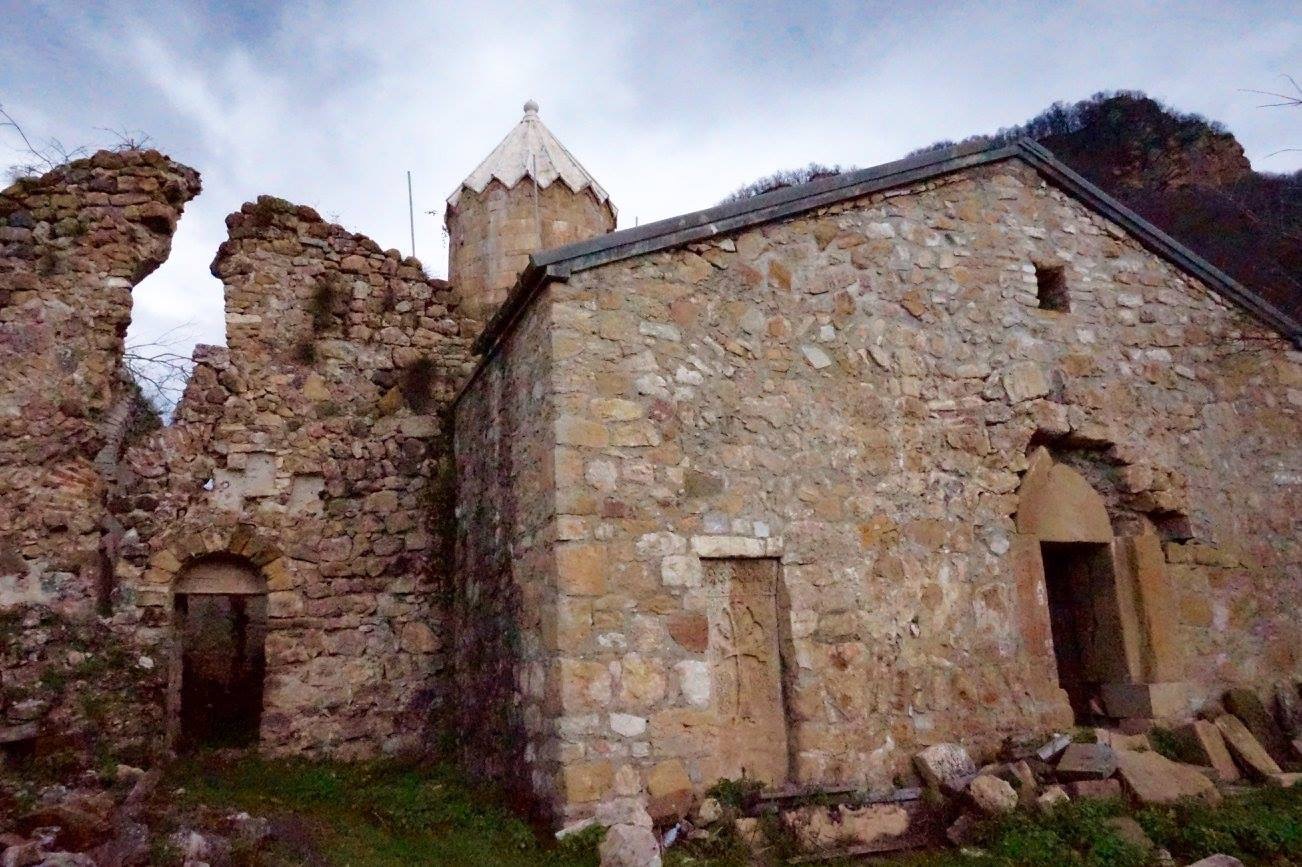
Gtichavank Monastery in Hadrut (2015). Used with permission from Yelena Ambartsumian.
Heartbreakingly, the exodus of Armenians and Azerbaijan’s occupation of the region leaves Armenian art and architecture unprotected, and we are already seeing videos of Azerbaijani soldiers shooting at and desecrating cultural heritage from Azerbaijani social media channels (international reporters are not able to access the region). Artsakh is known as the “Crown Jewel” of Armenian cultural heritage, as it contains some of the most exemplary representations of medieval Armenian architecture, as well as important sites such as the first school to teach the Armenian alphabet in the early fifth century.
War Crimes, Human Genocide & Cultural Genocide
It is a story well-known to regions in the throes of war: the searing pain of losing one’s home is compounded by the risk posed to cultural heritage left behind. In international law, war crimes, crimes against humanity, ethnic cleansing, and [human] genocide are defined separately from cultural genocide. However, all usually include acts of cultural genocide, due to the nature of the crimes committed.
Evidence of cultural genocide can be used to help prove the special intent required for the crime of genocide. This is largely because the two are so closely connected. In fact, modern experts urge legal professionals to understand that cultural genocide is “as old as [human] genocide itself” and may (in fact) be virtually inseparable from human genocide.
In light of the current situation in Armenia, and past actions by Azerbaijani forces in Artsakh— coupled with Azerbaijan’s complete eradication of over 100 medieval monasteries and thousands of cross-stones in its exclave of Nakhichevan during “peacetime”—it is an almost certainty that Azerbaijan will continue to destroy Armenian cultural heritage. Moreover, because global cultural heritage organizations such as UNESCO, have failed to uphold their own organizational standards, and other entities such as the EU have refused to condition their purchases of natural gas from Azerbaijan on Azerbaijan’s respect for cultural heritage, there is an even higher likelihood that Azerbaijan will continue to act with impunity.
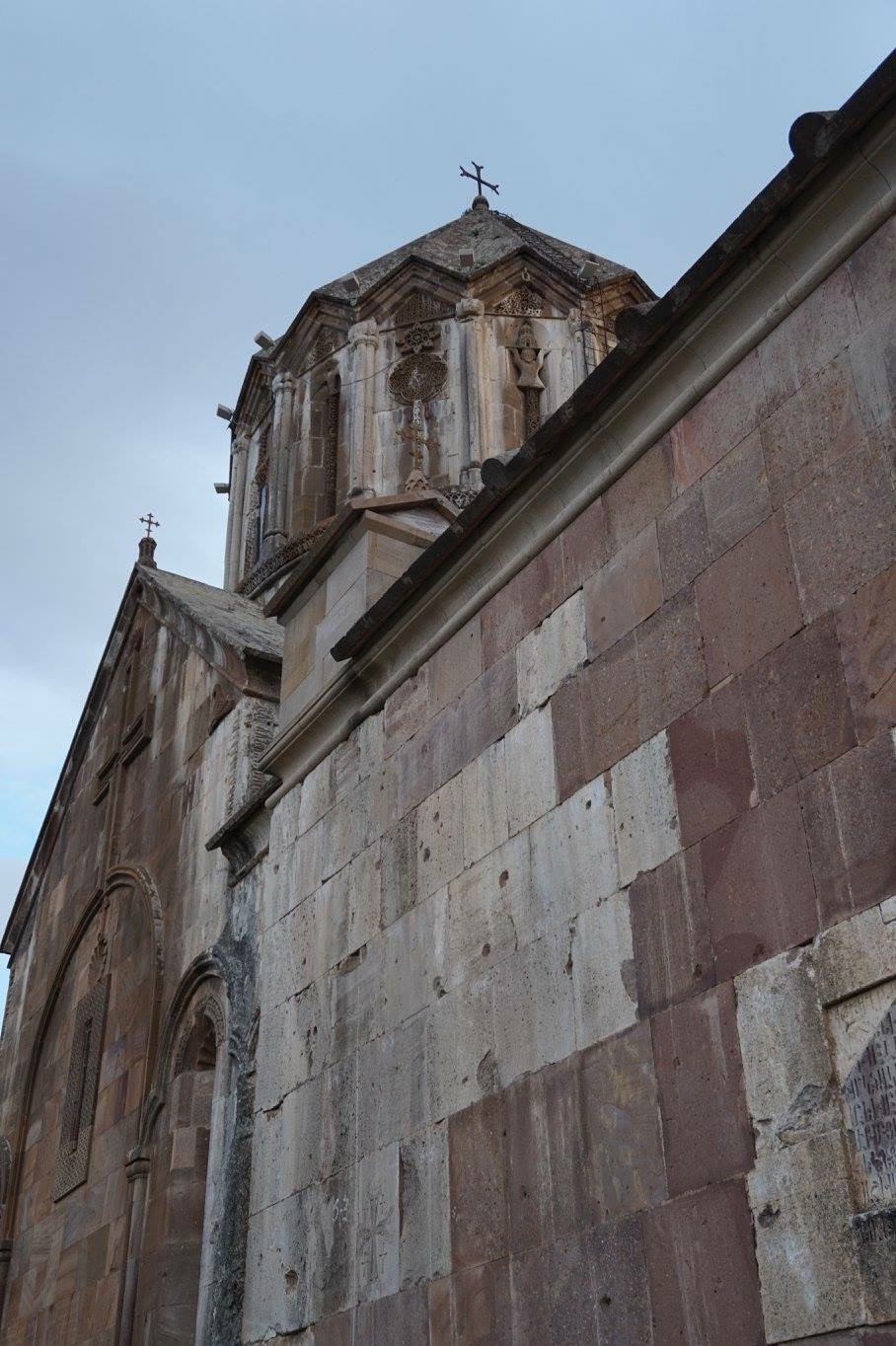
Gandzasar Monastery in Martakert (2015). Used with permission from Yelena Ambartsumian.
UNESCO’s Failure
UNESCO, known globally for championing world cultural heritage, has failed the Republic of Artsakh. On September 19, 2023, UNESCO launched a well-meaning (but utterly toothless) Armenia National Statement of Commitment Knowledge Hub and a similar Armenia National Consultation Report Knowledge Hub. The online portals come across as a futile attempt to maintain a presence in the real-life devastation currently unfolding. At this stage in the military regime’s progress, resources should be used to assist humanitarian and cultural preservation efforts on-the-ground—but Azerbaijan simply refuses to guarantee safe access to UNESCO monitors.
Both UNESCO’s current response and its lack of action in the months leading up to these (foreseeable) events are frustrating. Armenians have come to terms with UNESCO’s inability to protect their cultural heritage in this situation. The reasons UNESCO has been so ineffective are primarily two-fold: the first is the UNESCO’s Second Protocol lacks the enforcement mechanisms needed to (1) prevent cultural heritage destruction by states who are bad actors and (2) punish states that do. The disadvantages on relying on an organization such as UNESCO are compounded when the cultural heritage at issue resides in an area that UNESCO does not recognize as a “state.” The Republic of Artsakh falls under this category (meaning, UNESCO does not recognize it as a “state” of Armenia). UNESCO even failed to send a mere fact-finding mission to Artsakh, due to Azerbaijan’s objections.
The small crumb of good news is that the Armenian people took initiative and found a brilliant way to enforce global protection of their art and cultural heritage. As a law firm dedicated to protecting art and cultural heritage, we applaud the Republic of Armenia for developing this framework and precedent. We also are heartbroken that, as a nation, they were forced into developing this sort of legal path while a humanitarian crisis is currently ongoing.
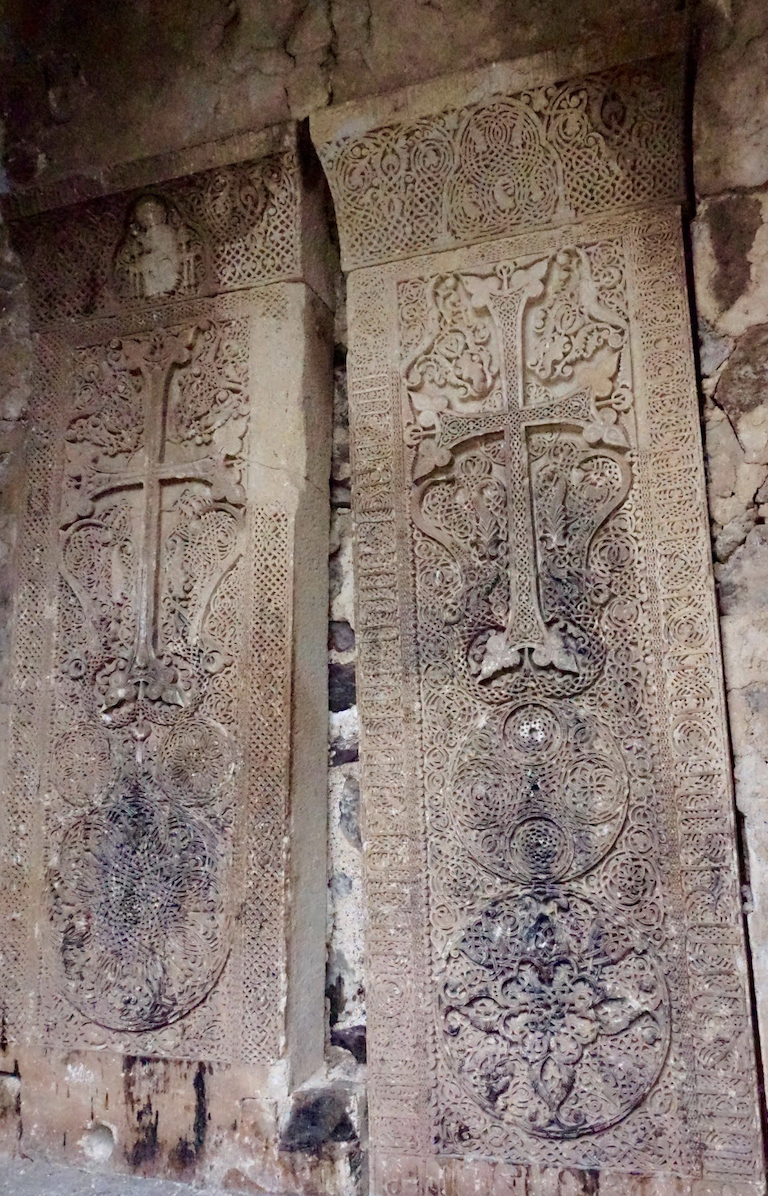
Dadivank’s khachkars (2015). Used with permission from Yelena Ambartsumian.
ICJ’s Decision and CERD
Instead of going through the UNESCO conventions, which inherently apply only to recognized states (and have therefore left out Armenian cultural heritage within the currently unrecognized Republic of Artsakh), Armenia instituted a case against Azerbaijan before the International Court of Justice (“ICJ”) under the CERD—the Convention on the Elimination of all Forms of Racial Discrimination—a United Nations treaty to which both Armenia and Azerbaijan are party.
The ICJ ruled for Armenia in its orders on provisional measures, stating that Azerbaijan must cease their state-sponsored destruction of Armenian art and cultural heritage in Artsakh.
With an ICJ order, which the U.N. Security Council is responsible for enforcing, the Republic of Armenia was able to create a new tool for safeguarding Armenian cultural heritage. Under Art. 94(2), member states are required to comply with ICJ orders. This means that Azerbaijan is clearly in violation. The U.N. Security Council has never before had to impose punishments (usually, simply the threat of involvement and diplomatic pressure from other nations are enough to stop the harm being done). However, in this case, action may not only be warranted, but is necessary to prevent Armenian culture from being erased from this region.
In an interesting update, the Republic of Armenia filed a request for indication of provisional measures against Azerbaijan, under the Armenia v. Azerbaijan proceedings before the ICJ on Sept. 29, 2023. In the filing, the Republic of Armenia specifically asked the Court to reaffirm Azerbaijan’s obligations under the Orders it rendered previously (stating, “in particular those of 7 December 2021 and 22 February 2023.“).
The importance of protecting the art and cultural heritage in Artsakh cannot be undermined. Why? Read on.
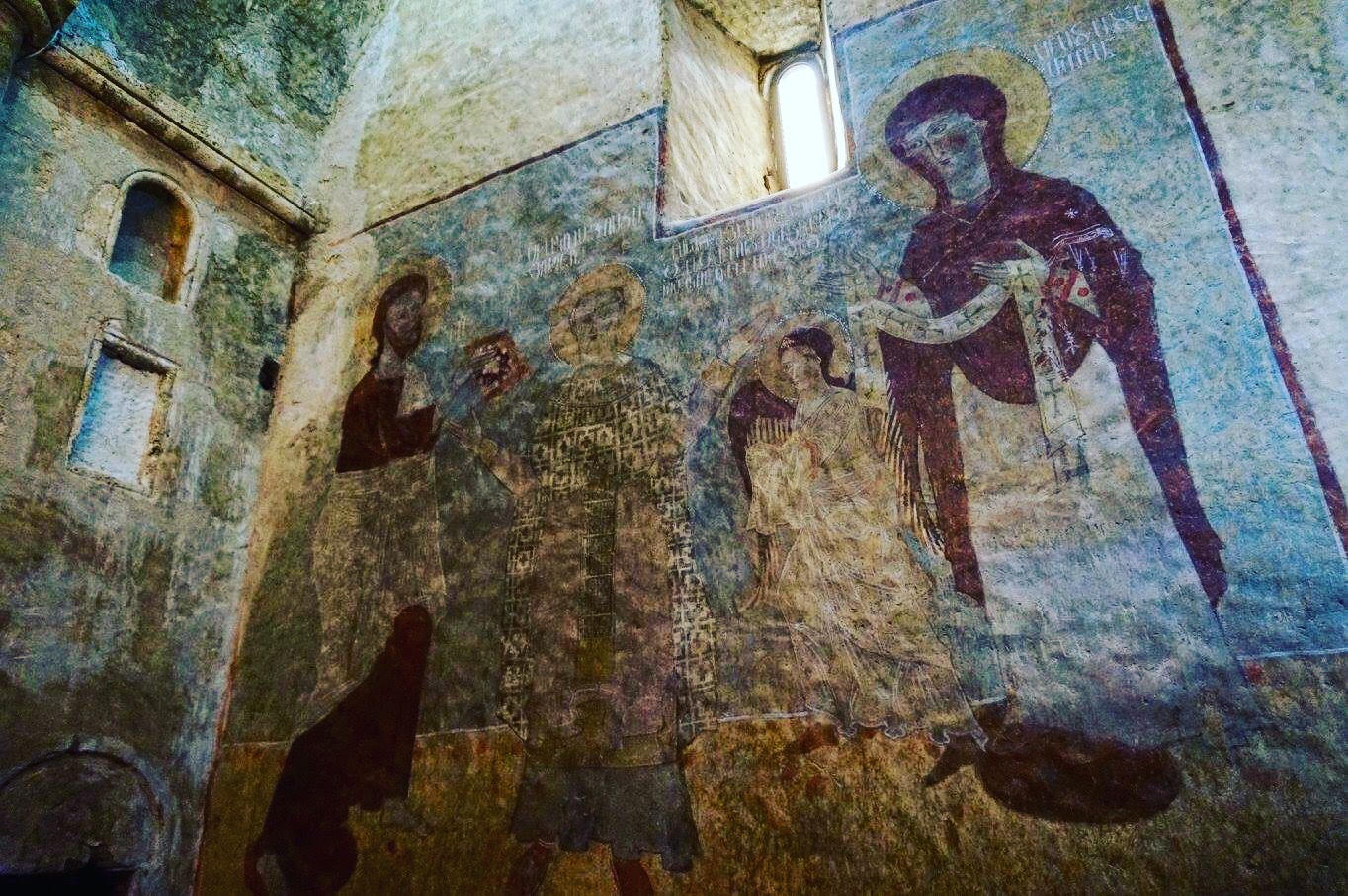
Fresco in Dadivank (2015). Used with permission from Yelena Ambartsumian.
Armenian Crown Jewels at Risk
Armenian cultural heritage has been under attack for some time. For evidence, turn to the fate of Armenian culture in the Caucasus under Azerbaijani occupation. Nearly all Armenian heritage sites in Nakhichevan were destroyed by Azerbaijan during “peacetime.” Satellite imagery by the Caucasus Heritage Watch from November 2022 confirmed that 98% of Armenian cultural sites were completely destroyed. Devastatingly, such annihilation was the result of state-sponsored, orchestrated destruction by Azerbaijani officers. To date, Azerbaijan denies destruction and instead claims that Armenian cultural heritage never existed in Nakhichevan.
Artsakh’s treasures are incredibly vulnerable in light of recent aggression by Azerbaijani forces. This is devastating to the Armenian and global artistic, religious, and historical academic communities, because Artsakh is referred to as the crown jewels of Armenian culture due to the massive number of sites from antiquity to the medieval ages, as well as cave complexes with some of the earliest evidence and remains of various hominid species in Eurasia (after crossing from Africa). In addition to having ties to Armenian nobility, the art, artifacts, and architecture in Artsakh are vital to understanding and appreciating Armenian culture. Armenians themselves reported emphasize the significance of Artsakh by saying, “after all, the crown of the ancient Kingdom of Armenia is in Nagorno-Karabakh [Artsakh].”
The entire region presents a stunning encapsulation of Armenia’s art and history. Early historical monuments and ancient fortresses reflect pre-Christian influences, while later expressions such as illuminated manuscripts, ecclesiastical murals, cross-stones, and religious structures embody the heritage of one of the world’s oldest, indigenous Christian populations. Below are two specific Armenian cultural crown jewels, currently under attack.
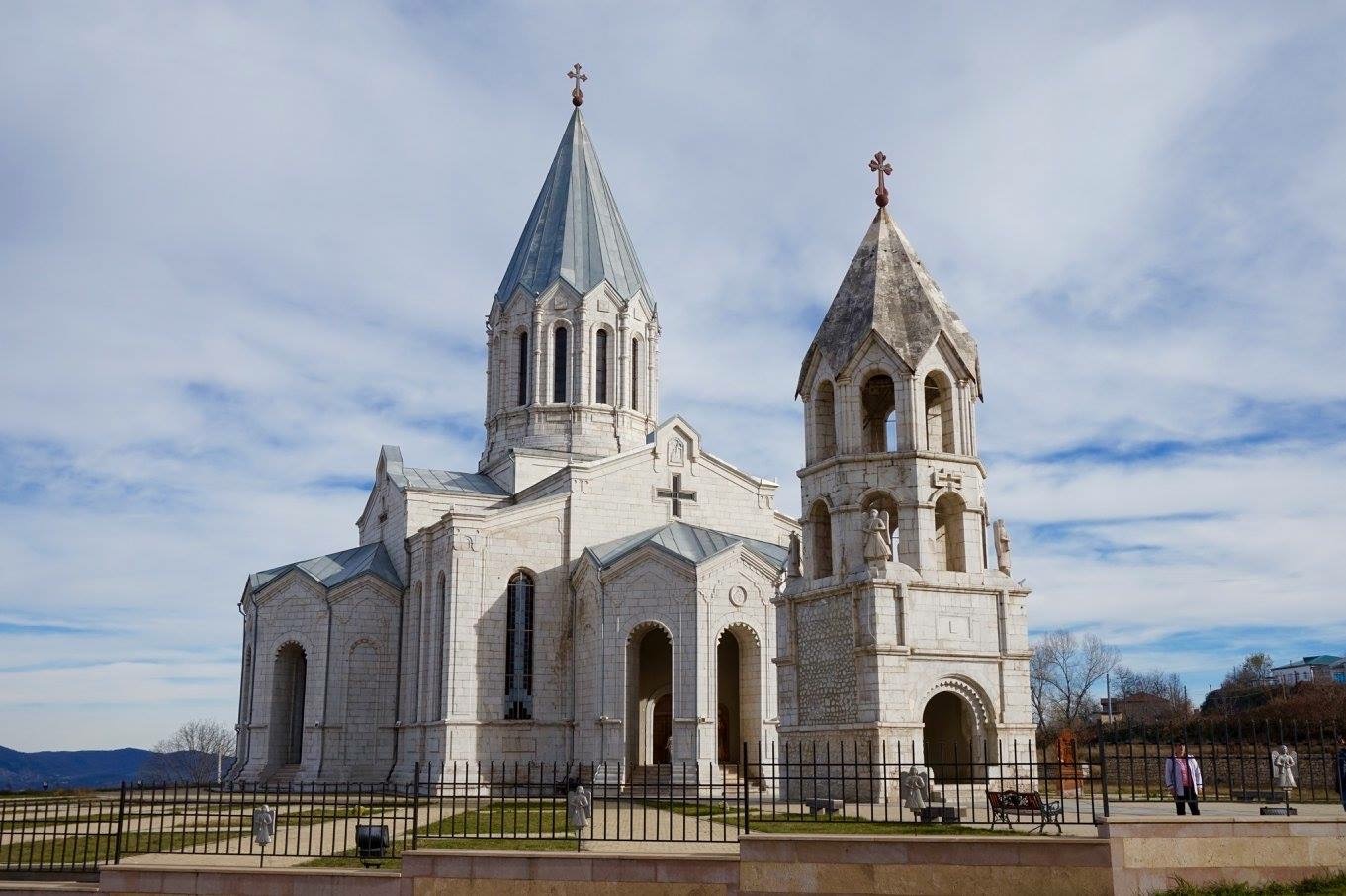
Ghazanchetsots Cathedral in Shushi (2015). Used with permission from Yelena Ambartsumian.
Shushi
The city of Shushi, in Nagorno-Karabakh, is a true Armenian cultural crown jewel. Shushi came under occupation by Azerbaijan in November 2020. Before and after gaining control of Shushi, Azerbaijan intentionally attacked its Armenian cultural heritage. In fact, in October 2020, it shelled the beautiful Ghazanchetsots Cathedral not once, but twice. There was no evidence that the shelling qualified as a military objective, particularly as civilians were hiding in the church (and the second shelling occurred when international journalists arrived to cover the destruction —one journalist was killed).
Ensuing coverage of the cathedral revealed graffiti on the walls, with Azerbaijani leaders marching through the sacred space. Precious manuscripts and relics, such as the Right Arm of Grigoris—the Catholicos of the region and grandson of St. Gregory the Illuminator who
converted Armenia to Christianity in the early 300s—are feared to be lost.
Azerbaijan then began its own “renovation” of the cathedral (deemed by the Azerbaijani Ambassador to the Holy See Ilgar Mukhtarov as a corrective effort to return the cathedral to “its original appearance [prior to Armenian cultural influence.]” This “renovation” was not done in consultation with the Armenian Apostolic Church and instead involved “beheading” the cathedral by removing its pointed dome—a hallmark of Armenian church architecture. Azerbaijan also destroyed another church in Shushi—the “Kanach Zham” (Green Chapel) Armenian Church of St. John the Baptist—by removing its pointed cupola.
The devastation is reminiscent of proto-Azerbaijani armed forces’ destruction of Shushi in 1920, which were supported by the Ottoman Army, as it marched eastward to try to take control of the region amidst the Armenian Genocide. At that time, the Ghazanchetsots was also targeted and vandalized, in addition to other significant Armenian cultural heritage sites. Half of Shushi was revealed to be destroyed, as the unrecognized Azerbaijan Democratic Republic carried out a “cultural de-Armenianization” of Nagorno-Karabakh. Current reports and photos of the region now under occupation prove that the cultural jewels of the city are – once again – suffering intentional destruction at the hands of Azerbaijani military forces.
Dadivank
Dadivank is another important cultural jewel that has fallen under Azerbaijani occupation. This is an unprecedented loss, as the Dadivank region is a spiritual center for Armenian Christians. Dadivank contains an important religious complex, known as the Dadivank Monastery, which houses the relics of St. Dadi, a disciple of Thaddeaus the Apostle, in addition to other sacred artifacts and objects. Because the land is now under Azerbaijani control, irreplaceable symbols of Armenian spiritual and religious heritage are in danger.
The monastery itself encompasses a series of more than thirty buildings on its territory. This includes several churches, chapels, monasteries, libraries, and living quarters, as well as the Hasan-Jalal Palace (and even a printing press!). Cultural highlights include works such as the frescos on the walls of the Church of the Holy Virgin (built in 1214 by Princess Arzu-Khatan, and the porch-chapel of St. Grigor (built in 1224 as the burial vault of princes).
Another priceless piece of Armenian cultural heritage is located on these grounds: khachkars, or cross-stones (stone slabs with engraved crosses). These are irreplaceable components of the Armenians’ cultural legacy, because they are exclusive to Armenian religious art (and have been for centuries). Many of the khachkars located in the St. Dadi Church, for example, date back to the 12th and 13th centuries. Unfortunately, because these works are so closely tied to Armenian Apostolic Church identity, khachkars and other works of ecclesiastical art and architecture are prime targets for Azerbaijani destruction.
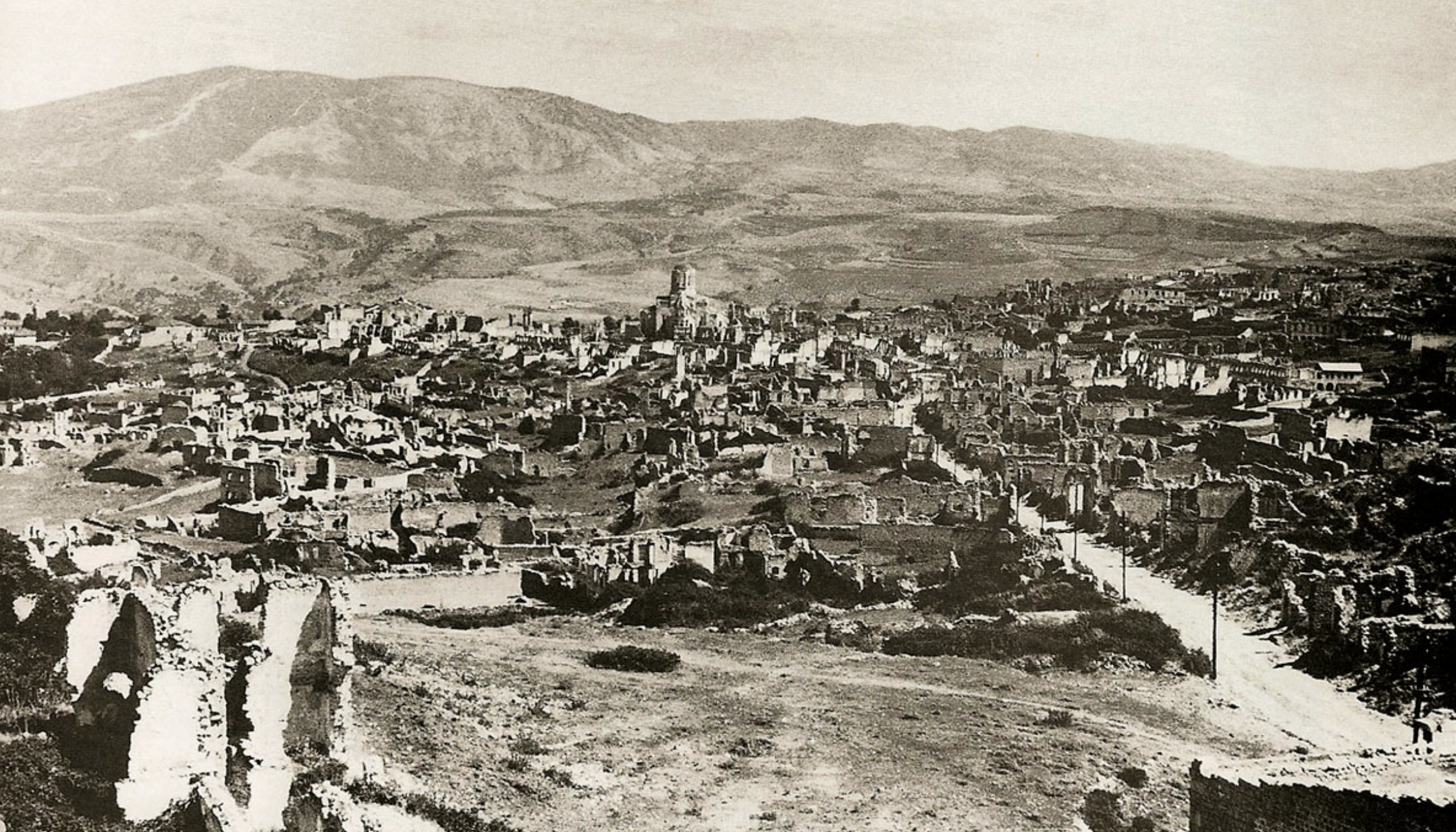
Ruins of Shushi after the city’s destruction by Azerbaijani army in March 1920. In the center: defaced Armenian Ghazanchetsots Cathedral. Image via State Archives of Armenia (public domain).
Global Response
Armenians who have been able to flee recount the bombing, fear and death they have left behind. Their first-person accounts give us a clearer insight as to what is truly going on in Artsakh – both to ethnic Armenians and to their cultural and artistic treasures. Reports of attacks done with “no apparent regard for the lives or basic human rights of the population of Nagorno-Karabakh” explain the seriousness of the situation.
Armenian art and architecture carry incredible significance – not just in Armenian culture, but as a vital piece of our shared global human narrative. The works being destroyed are testaments to their artistic mediums – gorgeously decorated and elaborately intricate. More importantly, they are symbols of the history of Armenia as a liberated people.
Many of these cultural heritage sites have served as pilgrimage destinations for Armenians for centuries. Even apart from the significance to Armenian culture, the sacred works and spaces are a testament to pre-Christian medieval influences, early Christian artistic works, and the 19th and 20th century religious-cultural renaissance of the region.
All can do their part in raising awareness of the on-going crisis in Armenia. In addition to continuing to pressure government officials to take action, make a donation through a trusted relief organization.
Donate to the Armenian Red Cross here.
by Amineddoleh & Associates LLC | Sep 29, 2023 |
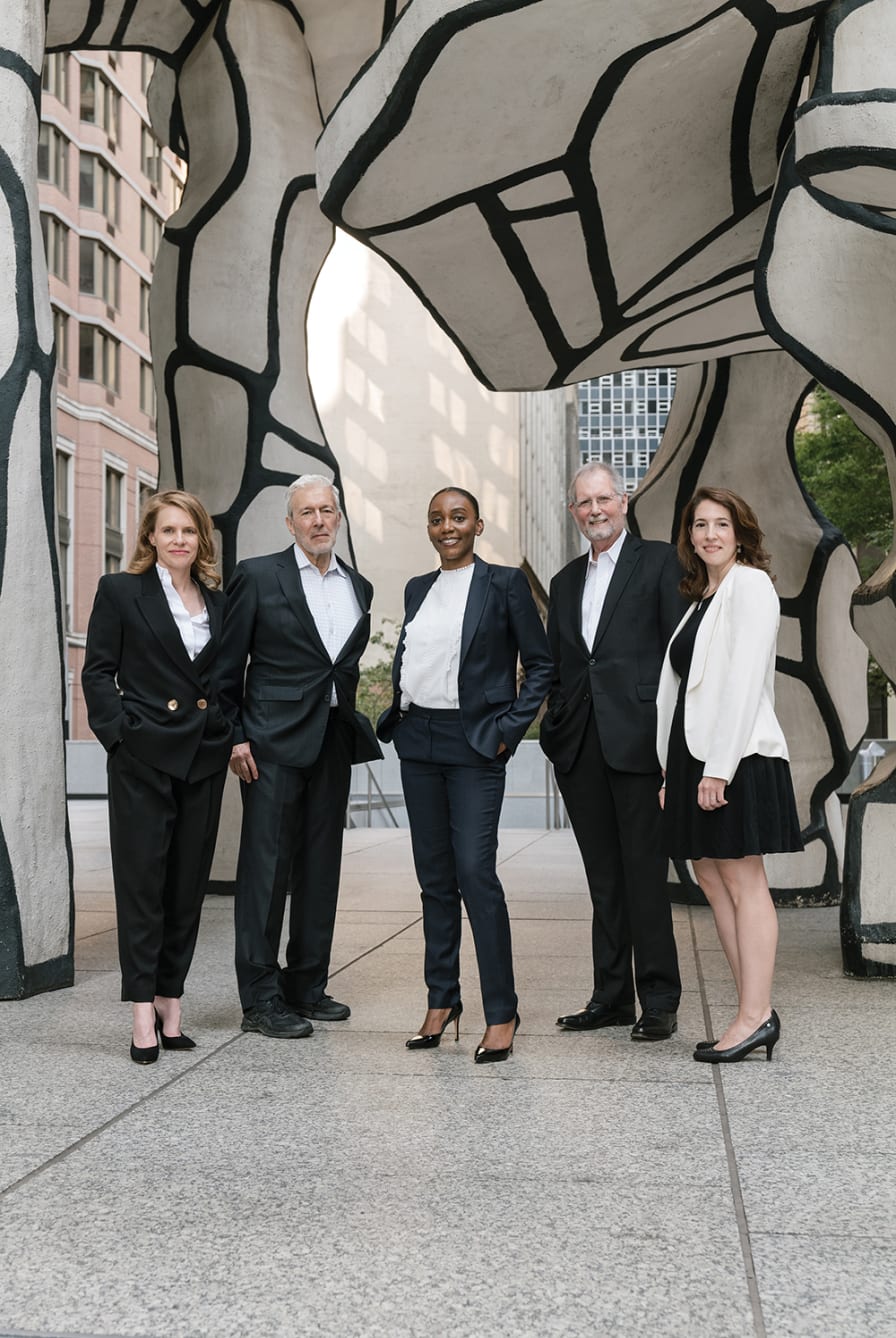 Our founder, Leila Amineddoleh, has recently been featured in New York Metro Super Lawyers Magazine, alongside other leaders in her field. Leila was chosen for the piece as a top-rated intellectual property, art, and cultural heritage lawyer well-known in the industry for getting the job done right. This means advocating both for her clients, and for the art and cultural heritage at issue.
Our founder, Leila Amineddoleh, has recently been featured in New York Metro Super Lawyers Magazine, alongside other leaders in her field. Leila was chosen for the piece as a top-rated intellectual property, art, and cultural heritage lawyer well-known in the industry for getting the job done right. This means advocating both for her clients, and for the art and cultural heritage at issue.
In the article, Leila’s experience working with our former client (and now current friend) Laura Young, is highlighted. Young is our client who found an Ancient Roman marble bust at her local Goodwill in Austin, TX. Our firm has written previously about Leila’s and Laura’s story. Read the incredible journey one Roman bust took from Germany to Texas (and how he found his way home) here.
In the piece by Super Lawyers, Leila’s success working with Laura is illustrative of her signature manner taking care of her clients by providing insight on best practices in the art law field. In Leila’s words, her work as a lawyer requires giving this special level of attention. She says it can require coming up with “creative solutions . . . . As a lawyer, you find out what’s important to someone.”
Later in the article, Leila gives her thoughts on changing attitudes on lawsuits involving stolen antiquities. She connects the rise of modern lawsuits brought by claimants for contested works to a 1995 international investigation in Italy. That investigation exposed many thought-to-be honest dealers as thieves, and revealed and auction houses to be engaging in deceptive practices. Leila explains how the impact of this investigation continues to call objects held by museums, collectors and auction houses into question, leading to an on-going return of hundreds of objects and works of art.
Leila’s success has launched her and her namesake firm to even greater heights. It is an honor to be featured alongside other esteemed colleagues this stand-alone piece. In it, Leila and her colleagues give important guidance on the current industry challenges for art lawyers. Read the piece here.















 Our founder, Leila Amineddoleh, has recently been featured in New York Metro Super Lawyers Magazine, alongside other leaders in her field. Leila was chosen for the piece as a top-rated intellectual property, art, and cultural heritage lawyer well-known in the industry for getting the job done right. This means advocating both for her clients, and for the art and cultural heritage at issue.
Our founder, Leila Amineddoleh, has recently been featured in New York Metro Super Lawyers Magazine, alongside other leaders in her field. Leila was chosen for the piece as a top-rated intellectual property, art, and cultural heritage lawyer well-known in the industry for getting the job done right. This means advocating both for her clients, and for the art and cultural heritage at issue.